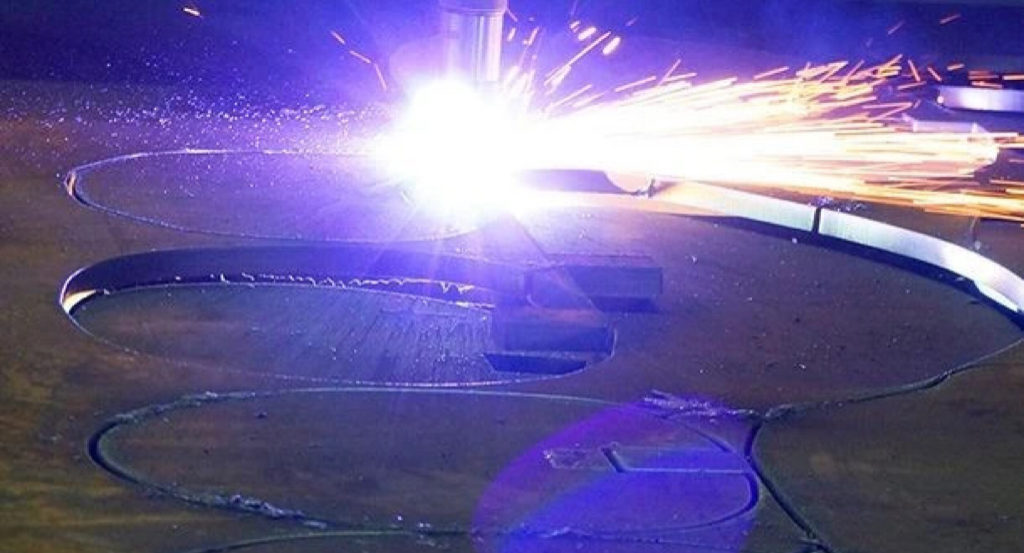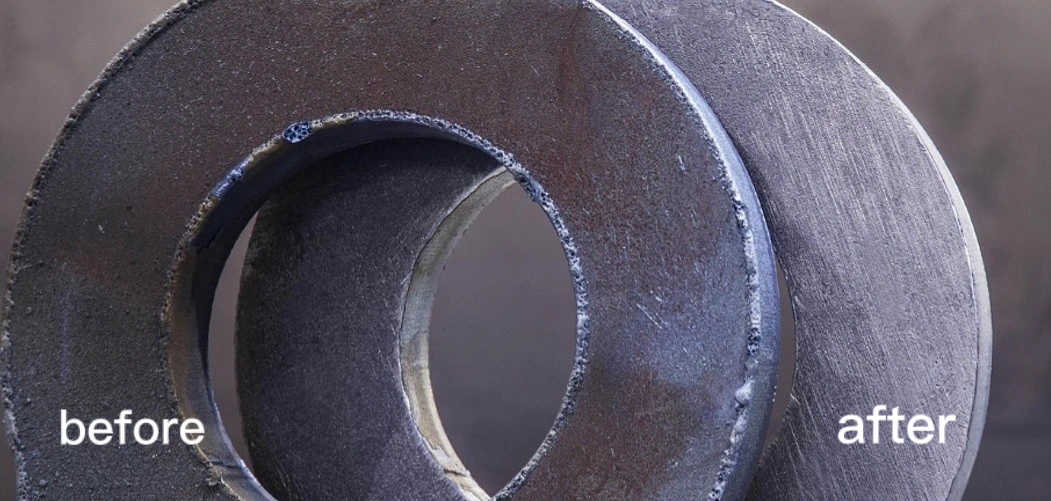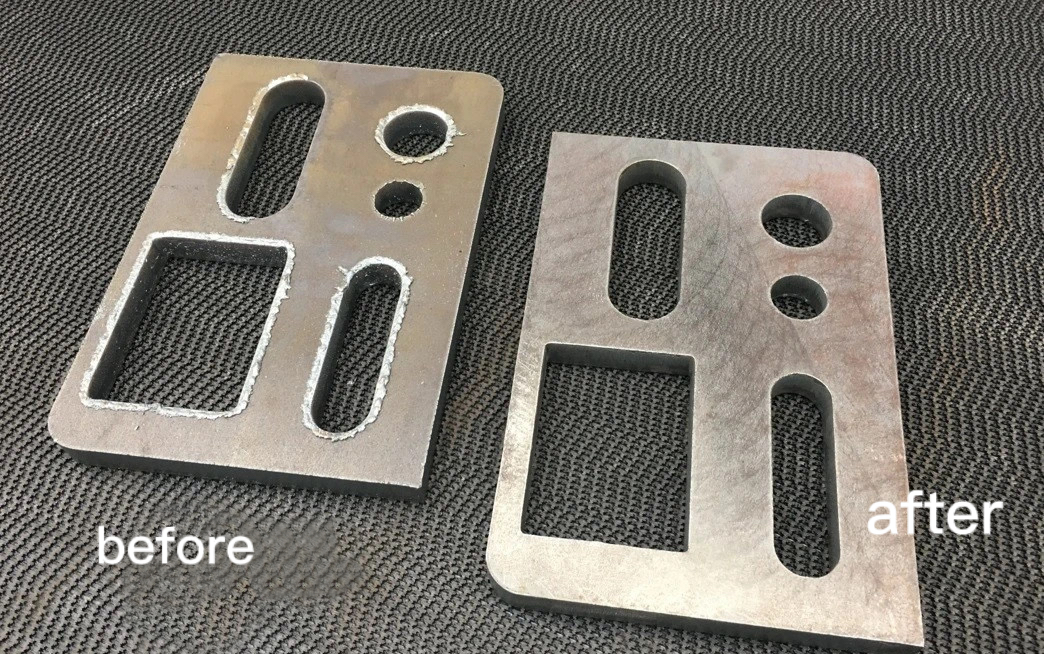The characteristics of thick plates: the thicker the plate, the lower the quality after cutting. If you use suitable deburring equipment, you can easily remove all kinds of burrs produced by cutting. At the same time, to ensure high process safety and low product cost for you.
When the thickness of the sheet reaches ten millimeters or more, the widely used laser cutting process has reached its functional limit. At this time, foundry companies usually use other processes such as plasma cutting or flame cutting processes instead. In the plasma cutting process, a gas jet with a temperature of up to 30000°C melts the material in a plasma state to complete the cutting; while flame cutting is to increase the ignition point of the material to at least 1150°C (for non-alloy steel) along the kerf to cut.
The high temperature generated by cutting will leave traces and form burrs on the workpiece. The hotter the material, the more obvious the burrs-burrs of 3 mm or greater thickness are not uncommon. Other factors such as the thickness of sheet metal parts, material quality and composition, the temperature of the surface and cutting parts, etc. can also cause the formation of burrs. In addition, the processing parameter setting of the equipment is also an influencing factor: the greater the deviation from the optimal cutting setting during the operation of the personnel, the more burrs produced by the cutting. In the plasma cutting process, if the cutting speed is too slow, it will aggravate the formation of burrs. In summary, under the action of various factors, more or less large or small burrs will be produced on the surface of the workpiece. Compared with small parts with many inner cuts or inner holes, large parts with simple outer contours will form fewer burrs during cutting.
Easily remove large burrs
In some cases, some special-shaped burrs can be easily knocked out: let the flame-cut part cool down, and then place it on the ground, on a pallet or in a container. However, this operation does not have any process safety. Relevant personnel or operators need to wear suitable protective clothing to prevent the dangers caused by the above operations. On the other hand, this manual polishing and deburring is time-consuming and laborious. The continuous load generated by the vibration of the tool during operation can endanger the health of employees.
For this kind of heavy processing task, it is a better choice to use a deburring machine in a relatively harsh industrial environment. The deburring machine can handle sheet metal parts that are too heavy to be processed manually. Practice has proved that the deburring roller is the best tool for removing large burrs on thick plates-it can safely and reliably remove large burrs on plasma or flame cutting parts. The deburring roller is flexibly attached to the edge of the workpiece, and gravity is applied to it to remove burrs. It can even successfully remove burrs on sheet metal that is thermally deformed by a few millimeters during the cutting process. Then through the polishing brush unit, the upper and lower edges can be rounded, and the secondary burrs generated during the polishing process can also be removed.
Easily handle the dregs of flame-cut parts
In addition to burrs, flame cutting will also form slag and oxide layers on the bottom of the workpiece. These stubborn elements can be removed by the hammer pin in the deburring machine. Aku EdgeBreaker® deburring machine can effectively remove large burrs and slag. The hammer pin strikes the workpiece from below until the slag is reliably removed. Compared with manual processing, the advantage is that there is no need to turn heavy workpieces, and the operator only needs to feed the cut workpieces directly into the equipment for slag removal processing. This not only reduces labor pressure and potential risks, but also simplifies the entire processing process. With the help of deburring equipment, the speed and reliability of slag removal are much better than manual operations, and the processing is comprehensive, ensuring the process safety of the entire process of deburring.
Post time: Jun-23-2021



